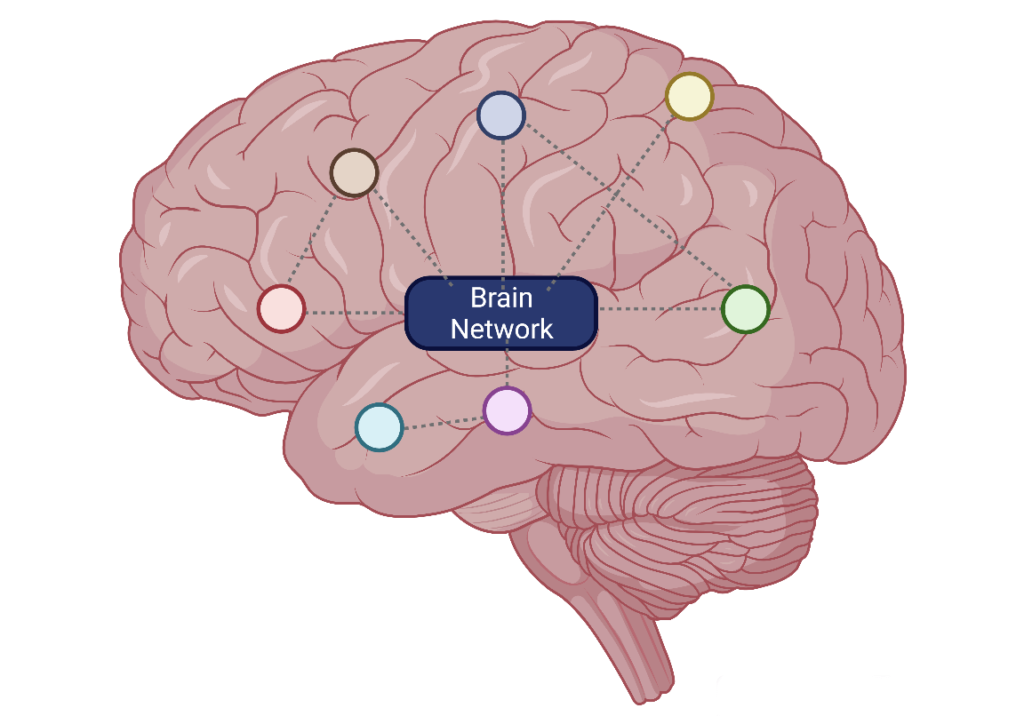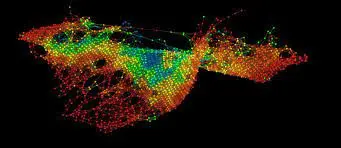What is Topological Data Analysis
Topological Data Analysis (TDA) is a mathematical framework that analyzes the shape and structure of data, revealing hidden patterns and relationships. Unlike traditional statistical methods, TDA focuses on the underlying topology, or geometric properties, of the data, allowing for a deeper understanding of complex systems. By representing data as networks or graphs, TDA uncovers essential features that may be overlooked by conventional approaches.
In this blog we will look into 7 latest applications of Topological Data Analysis in field of Drug Discovery, Epidemiology, Genomics Data Science, Environmental Data Science, Clinical Data Science Bioinformatics and Neuroscience. We will also explore specific tools, software and programming languages for topological data analysis.
Core Principles
At its core, topological data analysis relies on concepts from topology, a branch of mathematics concerned with the properties of spaces that remain unchanged under continuous transformations. Key techniques in TDA include persistent homology, which identifies significant topological features across multiple scales, and Mapper algorithms, which construct simplified representations of complex datasets. These tools enable researchers to navigate through high-dimensional data and extract meaningful insights.
Topological Data Analysis Applications in Biosciences
1. Brain Connectomes:
Neuroimaging techniques such as functional magnetic resonance imaging (fMRI) and diffusion tensor imaging (DTI) allow researchers to study the structural and functional connectivity of the brain. These techniques generate complex datasets representing brain regions as nodes and their connections as edges in a network. Topological data analysis provides a powerful framework for analyzing these brain networks and uncovering topological features associated with neurological disorders. TDA techniques such as persistent homology can identify significant patterns and structures within these networks that may not be apparent using traditional methods.
For example, in Alzheimer’s disease research, TDA has been used to analyze brain connectivity patterns derived from fMRI data. By applying persistent homology, researchers identified disruptions in the topology of brain networks associated with disease progression. Similarly, TDA has been applied to study brain networks in schizophrenia and autism spectrum disorder, revealing aberrant topological features that are characteristic of these conditions.

2. Drug Discovery and Development:
Topological data analysis has been utilized in drug discovery to analyze molecular interaction networks and identify potential drug targets. By examining the topology of protein-protein interaction networks or gene regulatory networks, researchers can pinpoint key molecules involved in disease pathways and prioritize them for further experimental validation.
One example of TDA in drug discovery is the identification of novel drug targets for cancer treatment. By analyzing protein-protein interaction networks in cancer cells, researchers identified key proteins involved in tumor growth and metastasis. These proteins were then prioritized as potential drug targets, and compounds were developed to inhibit their activity.
3. Epidemiology and Disease Spread:
Topological data analysis has been employed in epidemiological studies to analyze patterns of disease spread and transmission. By constructing networks of contact between individuals or geographic regions, TDA techniques can identify critical nodes or pathways for disease transmission and inform public health interventions aimed at controlling outbreaks.
For example, in infectious diseases such as COVID-19, epidemiologists used TDA to construct networks of contact between individuals based on factors such as proximity, social interactions, and travel patterns. By analyzing the topology of these contact networks, TDA identified critical nodes or pathways for disease transmission, such as densely connected social groups or transportation hubs.

4. Bioinformatics:
Topological data analysis offers a powerful framework for deciphering the complexity of genomic data and unraveling the underlying structure of biological networks. By analyzing gene expression profiles, protein-protein interactions, and genetic pathways, researchers can construct topological maps of cellular processes, elucidating the relationships between genes, proteins, and phenotypes. This enables the identification of biomarkers for disease diagnosis and prognosis.
For example, TDA has been applied to genomic data from cancer patients to identify molecular signatures associated with drug response, informing precision oncology approaches.
5. Genomic Data Science:
Topological data analysis facilitates the mapping of genetic variation across populations and species, shedding light on evolutionary processes and population genetics. By analyzing genomic datasets from diverse organisms, researchers can construct topological maps of genetic similarity, identifying clusters of individuals with shared ancestry and genetic traits. This enables the study of population history, migration patterns, and adaptation to environmental changes.
For example, TDA has been utilized to analyze genomic data from human populations, revealing patterns of genetic diversity and ancestry that contribute to our understanding of human evolution and migration.

6. Clinical Data Science:
In clinical data science, topological data analysis enhances diagnostic accuracy by uncovering hidden patterns in patient data and medical imaging. By representing patient records as high-dimensional datasets, healthcare providers can apply TDA techniques to identify clusters of similar patients based on demographic, clinical, and genetic factors. This facilitates personalized medicine approaches tailored to individual patient needs.
For instance, TDA has been utilized to stratify patients with cardiovascular disease based on their molecular profiles, guiding clinicians in the selection of optimal treatment strategies.
Also read about Clinical Data Science Real World Examples with Future Opportunities and Salaries.
7. Environmental Data Science:
Topological data analysis aids in unraveling the intricate dynamics of ecosystems, shedding light on the interconnectedness of species, habitats, and environmental factors. By analyzing biodiversity data from ecological surveys and remote sensing technologies, researchers can construct topological maps of ecosystems, revealing patterns of species distribution, habitat fragmentation, and ecosystem resilience.
For example, TDA has been employed to assess the impact of climate change on coral reef ecosystems, identifying vulnerable regions and guiding conservation efforts.
Also explore Environmental Data Analyst Top 5 Essential Skills and Job Responsibilities with Real World Scenarios.
Topological Data Analysis Software and Tools:
There are various software, tools, programming languages, and resources available for conducting topological data analysis (TDA). Let’s explore each of them:
Software:
Ayasdi Core: Ayasdi Core is a platform specifically designed for topological data analysis. It offers a user-friendly interface for data visualization, exploration, and interpretation. Ayasdi Core utilizes topological techniques such as Mapper and persistent homology to uncover hidden patterns and structures in complex datasets.
TDA Mapper: TDA Mapper is an open-source software package that facilitates the construction of topological maps from high-dimensional data. It allows users to visualize the structure of their data and identify clusters, voids, and other topological features. TDA Mapper is widely used in research and industry for exploratory data analysis and pattern recognition.
Tools:
Gudhi: Gudhi is an open-source C++ library for topological data analysis. It provides a wide range of algorithms for computing topological invariants such as persistent homology, as well as tools for data visualization and analysis. Gudhi is highly efficient and scalable, making it suitable for analyzing large-scale datasets.
PHAT (Parallel Homology Algorithms and Toolkit): PHAT is a software library for computing persistent homology on distributed computing systems. It leverages parallel computing techniques to accelerate the computation of topological features, making it well-suited for analyzing large and high-dimensional datasets.
Topological Data Analysis Programming Languages
Python: Python is one of the most popular programming languages for conducting topological data analysis. It offers a wide range of libraries and frameworks for TDA, including scikit-tda, ripser, and Dionysus. Python’s versatility and ease of use make it an ideal choice for both beginners and experienced researchers in TDA.
R: R is another programming language commonly used for TDA, particularly among statisticians and data scientists. The TDA package in R provides a comprehensive suite of tools for topological analysis, including functions for persistent homology and simplicial complexes. R’s rich ecosystem of statistical libraries and visualization tools makes it well-suited for conducting rigorous statistical analysis and data visualization in TDA.
Future Prospects
In conclusion, the future of topological data analysis in healthcare and biosciences holds immense promise for revolutionizing our understanding of complex biological systems and improving patient outcomes. By leveraging advanced mathematical techniques and computational tools, TDA enables researchers to navigate through vast datasets, uncover hidden patterns, and extract meaningful insights. From personalized medicine and drug discovery to epidemiology and systems biology, TDA offers a versatile approach to addressing pressing challenges in healthcare and biosciences.
As technology continues to evolve and datasets grow in size and complexity, TDA will play an increasingly vital role in driving innovation, discovery, and ultimately, improving human health and well-being.
Know more about 8 Biological Data Science Careers To Look Forward To in 2024.



